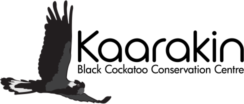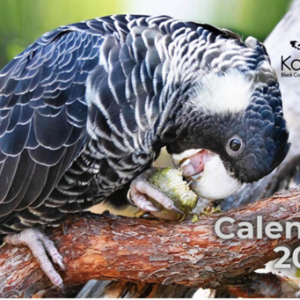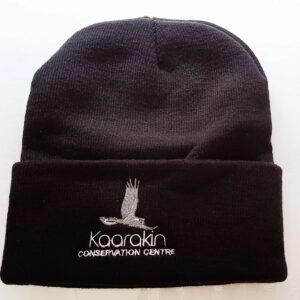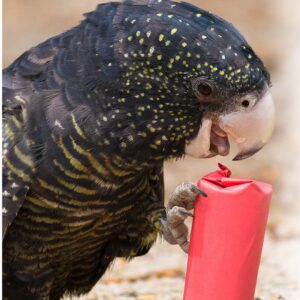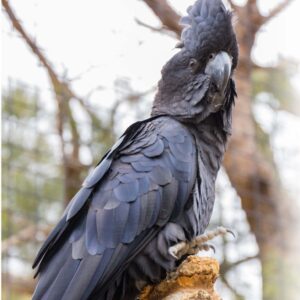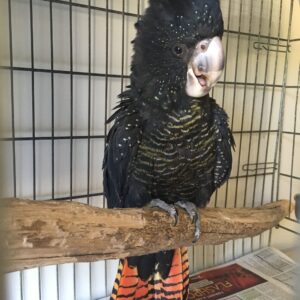We rescue wild black cockatoos in distress – most having been struck by vehicles, ill, shot, fallen, pulled from their nests, or attacked by ravens, pets, or other birds – and rehabilitate them at Kaarakin before releasing back into the wild.
Kaarakin Black Cockatoo Conservation Centre: Who we are and what we do
Kaarakin Black Cockatoo Conservation Centre is a specialist wildlife centre located in Perth, Western Australia, dedicated to the rescue and rehabilitation of sick and injured wild native black cockatoos. We are the only facility dedicated to the conservation and rehabilitation of black cockatoos in Australia.
Where is Kaarakin located in Western Australia?
Our home is a former wildlife park in the Perth hills where we have constructed our own unique facilities to enable injured black cockatoos to be rehabilitated and, if possible, returned to wild flocks. We are also home to a number of birds that cannot be released, and who assist us in our efforts to educate the community about the need to protect these unique birds.
Kaarakin is currently home to approximately 200 black cockatoos at various stages of rehabilitation. We are a not -for-profit organisation and we rely on volunteers and donations as well as our private tours and other fundraising events to continue our rescue and rehabilitation work.
The Black Cockatoo Preservation Society was first incorporated in 2006 by Founding Member, Glenn Dewhurst, and relocated to the current Kaarakin site in 2008, when demand for the Society’s services outgrew Glenn’s home. In 2018, we celebrated our 10 year anniversary and published a limited-edition newspaper.
We are open to the public by appointment only. Book a tour or experience, organise a school education experience, or gather your colleagues for a corporate volunteering day.
What is the meaning of Kaarakin?
Kaarakin is based on the Noongar word “kaarak” which means “black cockatoo”.
We also share our home with two sister organisations, Wildlife Australia and the Australian Threatened Species Centre. Wildlife Australia takes care of kangaroos, emus and other animals left when the former wildlife park closed, while the Australian Threatened Species Centre takes care of other native animals including a number of Pilbara and Alpine dingoes.
The black cockatoo rescues
There are three species of black cockatoo that are endemic to the South West of Western Australia – the Baudin’s black cockatoo, the Carnaby’s cockatoo, and the forest red-tailed black cockatoo. The Baudin’s and Carnaby’s cockatoo both have white tail feathers, but have different calls. Carnaby’s black cockatoos will “wee-loo” while Baudin’s black cockatoos “witch witcha”. In comparison, the forest red-tailed black cockatoo has distinctive red tail feathers and a “kaarak” call.
All are threatened with extinction due to land clearing, illegal shooting, vehicle strikes, and competition with other species for nesting hollows.
Currently, it is estimated that there are only 10,000 Baudin’s cockatoos left in the wild; 20,000 to 40,000 Carnaby’s cockatoos; and 10,000 to 15,000 red-tailed black cockatoos. They have been classed as endangered as their population has declined by 50% since the 10970s and is continuing to steadily decline. Therefore, it is essential to rescue and save as many black cockatoos as we can and work on protecting their native habitat.

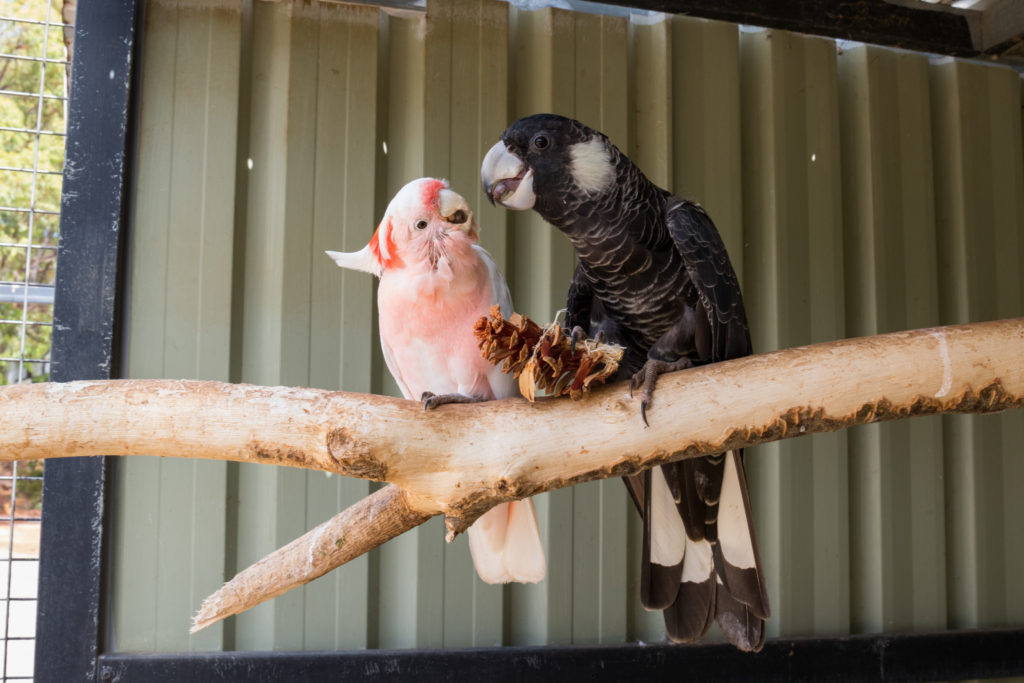

Our duties start when we receive a call, usually from a member of the public, informing us about an injured or distressed black cockatoo. We then send out the Kaarakin black cockatoo ambulance (entirely manned by trained volunteers) to rescue and pick up the patient.
Back at Kaarakin, our clinic volunteers will perform an initial assessment before transferring the patient to the highly-trained veterinarians at Perth Zoo for further treatment. They will perform an initial triage and the bird will be anaesthetised in order for the vet to perform a detailed examination, surgery and other treatments.
Depending on the injuries, the birds can spend a few days to several weeks at the Zoo before being given a clean bill of health. Some are found to be too badly injured to survive and will need to be euthanised, but the specialist care they receive at the Zoo gives them the best chance of recovery.
Once they are cleared to do so, the patient then returns to Kaarakin for rehabilitation.
The rehabilitation process for black cockatoos at Kaarakin
When it comes to black cockatoo rehabilitation, every case is different. Juvenile birds need to be fed with formula for a certain time, while adult birds might need to put on weight, wait for broken wings to mend, or they might just need a fitness boost before being released.
It can even take a few years before a cockatoo is fit for release! Therefore, Kaarakin has several types of aviaries to accommodate cockatoos in various rehabilitation stages. Beside the clinic, we also have rewilding aviaries, pre-release flight aviaries where the cockatoos learn to fly short distances, and a unique 60-metre long pre-release aviary that the birds must be able to traverse before release. In this long aviary, black cockatoos are encouraged to fly every day in order to build up their strength before the release day.
While we would love to see all the black cockatoos that we rescue flying happy and free in the sky, unfortunately some cannot be released due to the injuries they have sustained.


Taking care of the young black cockatoos
It is important that fledgling or juvenile black cockatoos do not “imprint” on humans during their stay at Kaarakin, as imprinting is irreversible and the black cockatoos cannot then be released back into the wild.
Consequently, young birds are introduced to older cockatoos to act as a parent and teach essential skills to the young ones, such as how to eat a marri nut or other native food that cockatoos would eat in the wild. As black cockatoos are incredibly social animals, the older cockatoos will usually take the young one under their wings.
If the cockatoo requires hand feeding, however, our highly-trained volunteers use special stainless steel crop needles which allow us to keep the birds in their most wild state, as opposed to syringe feeding.
Educating the public about black cockatoos and Kaarakin
Kaarakin welcomes visitors for tours and experiences. Some of our resident cockatoos can be seen in Jack’s Interactive Aviary – a giant aviary where you can walk in and personally interact with our black cockatoos.
We also provide education experiences for school groups, either here in our purpose-built Education Centre or we can come to your school with one of our friendly residents to spread the word about the need to protect these unique Western Australian species and their natural environment.
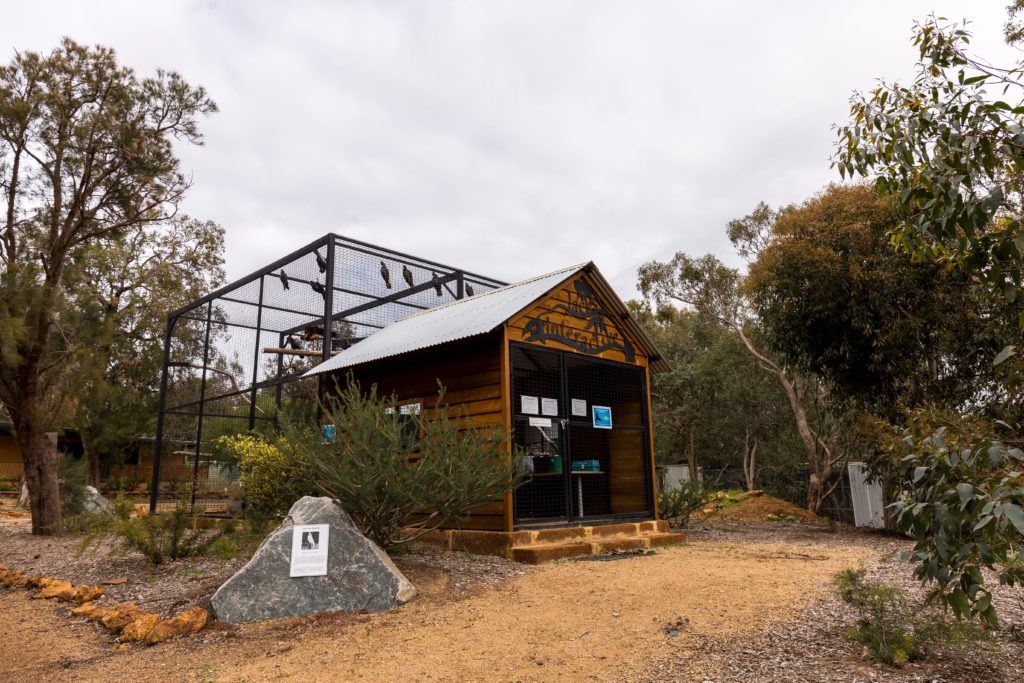
The release day
The release day is the moment we all wait for, as this means the black cockatoos we rescued are embracing their second chance to live in the wild!

We always release our cockatoos in a location where there is a current wild flock and in the same area where the cockatoos were rescued, in order to increase their chances at finding their initial flock. Every cockatoo is released in the evening so that they can join the wild flock and settle down for the night.
It is always a special moment for everyone who joins us for the release, and the lucky volunteers and visitors who experience this wonderful moment will cherish those memories forever.
Collecting data about the released black cockatoos
With the use of modern technology and data capture techniques, we have been thrilled to learn that our rescue and rehabilitation efforts are achieving great results.
Since 2015, Perth’s Murdoch University has been tracking a number of released rehabilitated black cockatoos using a specialized satellite transmitted and GPS tracker fitted to each bird’s tail feathers and back of their neck. The trackers are small and do not affect the birds in any way. The trackers are eventually dropped by natural feather preening and moulting.
Murdoch’s data has shown that a released bird has an excellent chance of survival in the wild, fitting in with new flocks and forming pairs. Some will even travel great distances to join their initial flock!
Presentation of Kaarakin in Australian Signed Language
Let’s keep in touch! Join our Kaarakin Flock newsletter for insider news and event announcements!
Our sponsors
We thank our sponsors for their support. Our rescue and rehabilitation work as well as our revegetation projects would not be possible without them. If you would like to get involved with Kaarakin and the conservation of our native black cockatoos, please contact us today!
Below is a list of the organisation who have kindly sponsored Kaarakin and assisted us with project developments:
- Bendigo Bank
- Biodiversity Protection WA Inc.
- Cellarbrations in Mundaring
- City of Gosnells
- Conservation Volunteers Australia
- CRI
- Department of Parks and Wildlife
- Department of Families, Housing, Community Services and Indigenous Affairs
- Feathered Friends
- GDF SUEZ Australian Energy
- Holcim
- Houndstooth Studio
- Kennards Hire
- Landcorp
- Lotterywest
- Men of the Trees
- Perth Zoo
- Vetafarm
- Zanthorrea
- Petwave
- Maddington Battery World
- Desert Shadow
- Desert Shadow Organic
